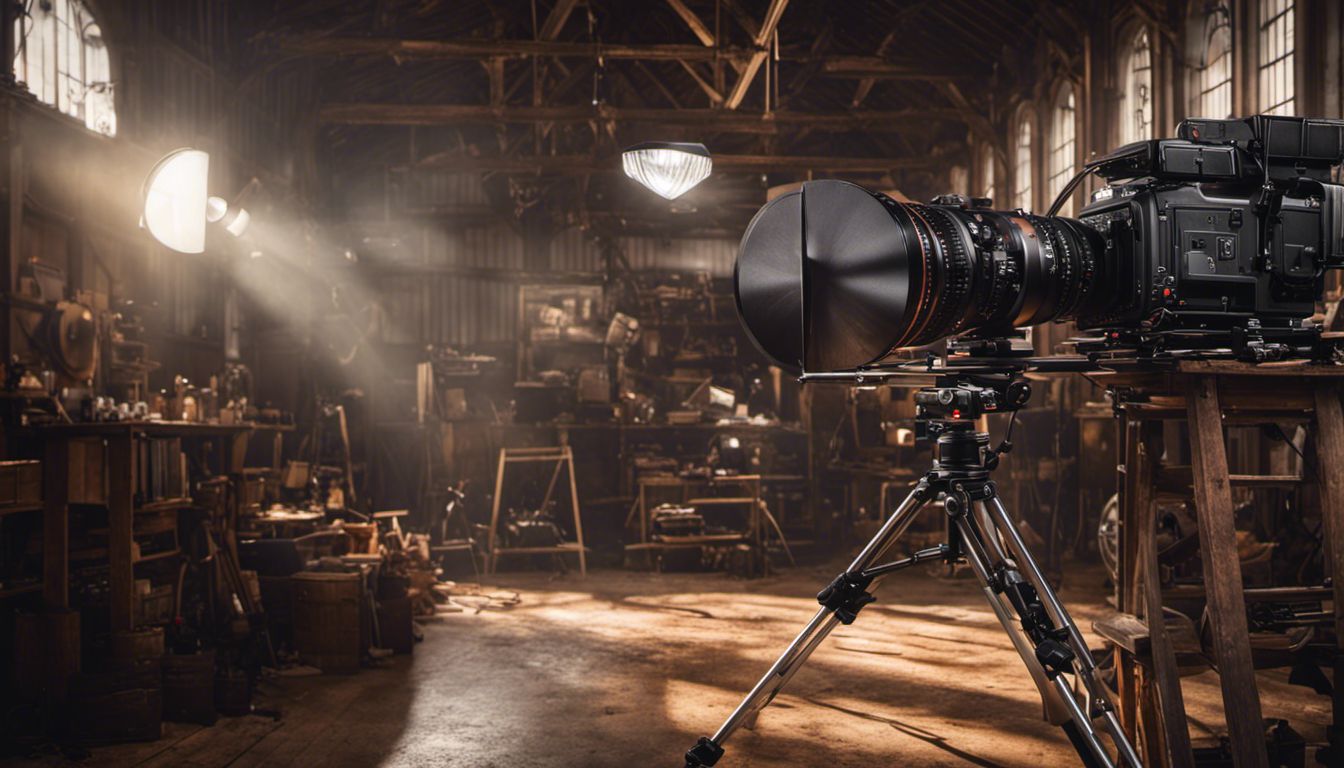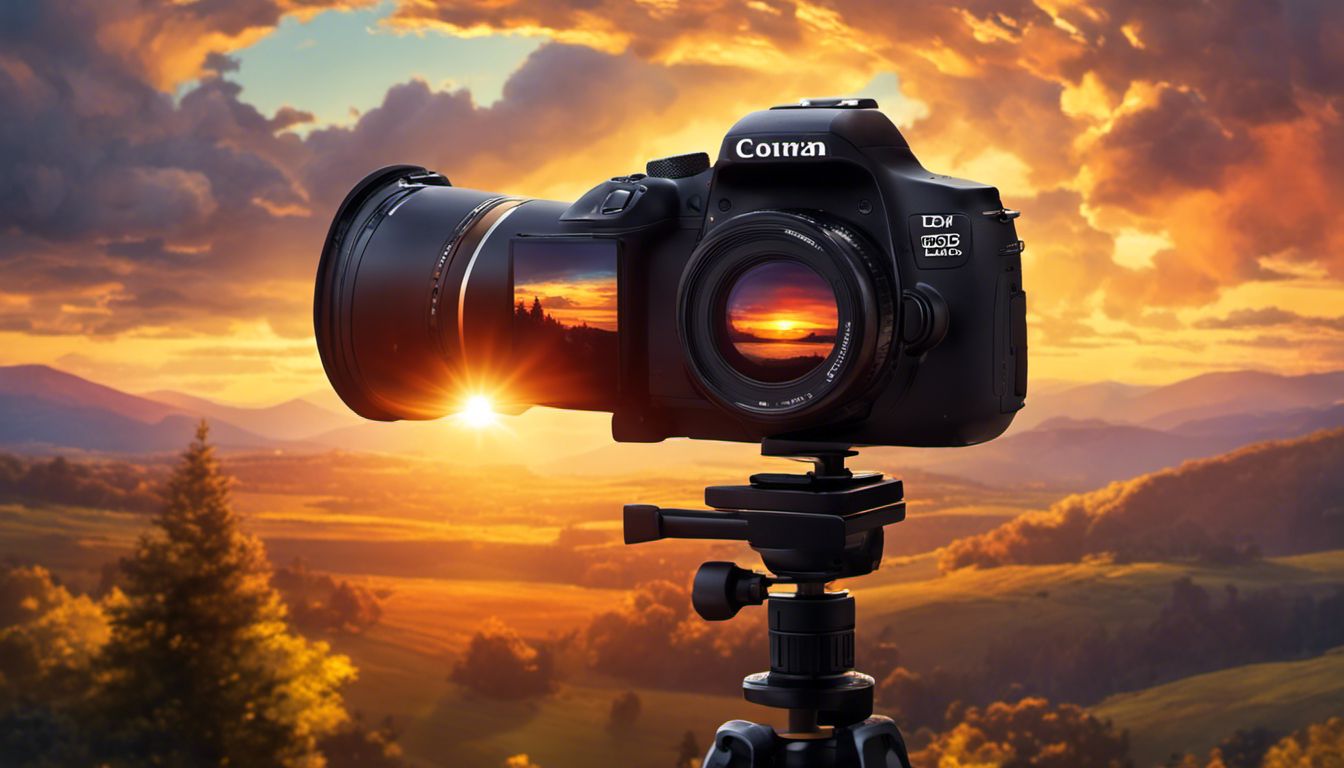The Ultimate Guide to Film and Video Production Techniques

Navigating the world of film and video production can be daunting, especially with its array of specialized techniques. In fact, video content is one of the most effective forms of media consumed today.
This guide will break down the jargon and provide you with a comprehensive understanding of different aspects such as pre-production, production, post-production, careers in this field and more.
Ready to become an expert on film and video production? Let's delve right in!
Key Takeaways
- Video production involves planning, filming, and editing to create compelling visual content.
- There are differences between video production and film production, videography, and video editing that are important to understand.
- The phases of video production include strategy, pre-production, production, post-production, and distribution.
- Different types of video production include website videos and TV commercials.
Understanding Video Production

Video production is the process of creating a video from start to finish, involving various stages such as planning, filming, and editing.
https://www.youtube.com/watch?v=hUmZldt0DTg
Definition and Importance

Video production is a creative process that involves capturing moving images on electronic media. It’s quite distinct from film production, which traditionally relies on celluloid film strips.
The importance of video production lies in its versatility and the influential role it plays in our daily lives. For instance, this dynamic medium caters to marketing strategies through commercials and social media videos, enlightens us with educational content, entertains via films and TV shows, and much more.
With an ever-growing digital age prevalence, understanding the definition and significance of video production is essential for aspiring filmmakers or anyone involved in creating visual content.
Video Production vs. Film Production
 Video production and film production, while similar in many ways, have differences that are important to understand.
Video production and film production, while similar in many ways, have differences that are important to understand.
| Video Production | Film Production |
|---|---|
| Video production often involves digital cameras and captures images electronically, either on tape or on a memory card. | Film production uses celluloid film to capture images and is a more traditional form of production. |
| In video production, images can be viewed immediately after they're captured. This is due to the use of digital technology. | In film production, the film must be developed in a lab before the images can be viewed. This can be a lengthier process. |
| Video production is typically less expensive than film production. This is because the equipment is generally cheaper and there are no development costs. | Film production, with the cost of film and the process of developing it, tends to be more expensive. |
| Video production is often used for shorter productions like commercials, corporate videos and online content. | Film production is often used for full-length movies, television shows, and high-budget commercials. |
Both types of production aim to create compelling content that engages and informs the audience. However, the choice between the two depends on factors like budget, project scope, and the desired aesthetic.
Video Production vs. Videography

Video production and videography are two different aspects of the video industry, each with its unique approaches and objectives. Understanding the key differences will help you make an informed decision when it comes to your video creation needs.
| Video Production | Videography |
|---|---|
| Video production involves planning, scripting and directing the story. | Videography is more spontaneous, with the videographer capturing events as they unfold. |
| In video production, the focus is on creating a highly engaging video with a particular purpose or message. | In videography, the emphasis is on capturing moments rather than crafting a storyline. |
| Video production is generally more complex, as it requires a team of professionals, including directors, editors, and technicians. | Videography is usually a one-person job, controlling the camera and capturing the scene or event. |
| The medium used in video production captures images via tape or memory card. | Videography uses cameras to record real events, situations, or milestones. |
While there are significant differences between video production and videography, both serve crucial roles in creating compelling visual content. Whether you require a meticulously planned production or spontaneous capture of moments, understanding these differences will help you choose the right service.
Video Production vs. Video Editing

Video production and video editing are two integral parts of the film and video creation process, but they serve very distinct roles.
| Video Production | Video Editing |
|---|---|
| Video production is a multi-phase process that involves strategy, pre-production, production, post-production, and distribution. | Video editing is a part of the post-production process which is handled by a technician after the images are recorded. |
| In video production, the focus is on planning and directing the story, ensuring every element fits into the narrative arc. | In video editing, the recorded footage is refined, arranged, and modified to finalize the story and enhance the overall visual and audio appeal. |
| Video production uses different mediums to capture images, such as tapes or memory cards. | Video editing involves the use of specialized software for cutting, transitioning, and special effects addition to the recorded footage. |
| The video production process requires meticulous planning and involves multiple team members. | Video editing is typically done by a single person or a small team and requires technical expertise and a keen eye for detail. |
The Phases of Video Production

The phases of video production are crucial for creating a successful video, from strategy and pre-production to production, post-production, and distribution. Learn more about each phase and how they contribute to the overall process.
https://www.youtube.com/watch?v=MldzFSKNBzQ
Strategy

The strategy phase of video production is crucial for setting the foundation of the entire project. It involves establishing the overall goal and purpose of the video, identifying the target demographic, determining where the video will be placed, setting a budget, and defining metrics to measure its success.
This phase helps ensure that all decisions made during pre-production, production, and post-production align with the intended objectives. By carefully planning and organizing each step of the process based on a well-defined strategy, filmmakers can create videos that effectively communicate their message to their desired audience.
During this stage, it's important to understand who your target audience is and tailor your video content specifically to them. By considering their preferences, needs, and interests from the start, you can make sure that your video resonates with viewers and has a greater chance of achieving its goals.
Whether it's an engaging commercial or an informative brand video, having a clear strategy in place before diving into production sets up your project for success.
Remember—strategy lays down the groundwork for everything that follows in film and video production. From creative execution to scriptwriting to scheduling and beyond—the decisions you make in this phase determine how successful your final product will be when presented to your intended audience.
Pre-production

Pre-production is a crucial phase in video production that involves planning and preparation before filming begins. It is the foundation of a successful project, where all the necessary elements are put in place to ensure smooth execution during production.
During pre-production, the concept is developed, scripts are written, storyboards are created, locations are scouted, actors are casted and a production schedule is established. This collaborative process allows for input from various departments to ensure that everything is well-prepared before cameras start rolling.
Effective pre-production not only saves time and resources but also sets the stage for a successful final product.
Production

Video production involves the actual filming and capturing of footage for a project. This phase is where all the planning and preparation from pre-production comes to life. The production crew, including the director, camera and lighting crews, sound crew, and special effects teams, work together to capture the scenes according to the creative vision.
It requires skillful execution of camera work, directing, lighting, and art direction to bring the project to reality. Attention to detail is crucial during this phase as every shot needs to be carefully composed and executed.
Once all the necessary footage has been captured, it will move on to post-production for editing and finalizing the video before distribution.
Post-production

Post-production is a crucial phase in video production where the final product comes to life. It involves editing, adding graphics, visual effects, color correction, and sound design.
A skilled technician performs video editing after the footage is recorded, bringing all the elements together. This stage allows for the addition of special effects and animations to enhance the visual appeal of the video.
Post-production ensures that the overall vision of the video is fully realized and results in a polished and professional final product.
Distribution

Distribution is a critical element of video production. It involves getting the finished video in front of its intended audience. This phase focuses on determining where and how to distribute the video, whether it's through posting it on websites or social media platforms, turning it into advertisements, or placing it on television or in-store displays.
The distribution strategy also includes metrics for tracking reach and response, ensuring that the video is reaching its target audience effectively. There are various platforms and methods available for distribution, including both traditional media and online platforms.
Different Types of Video Production

Discover the various types of video production, from website videos to TV commercials and social media videos. Find out how each type can benefit your brand and engage your audience.
Keep reading to learn more!
https://www.youtube.com/watch?v=wLfZL9PZI9k
Website Video

Website videos are an integral part of the video production process. They are specifically designed for marketing purposes and require strategy and distribution phases that are unique to website videos.
Unlike film production, website videos capture images using either tape or memory cards. Video editing is also an essential component of the broader video production process when creating website videos.
If you're looking for resources to help with website video production, The Sparkhouse offers a library of free tools and templates that can be used in creating engaging and impactful website videos.
TV Commercial

TV commercials are a popular form of video production that can be created for television, films, the internet, live broadcasts, home video, and other purposes. The process involves tasks such as setting up and operating broadcast gear, troubleshooting equipment, editing and adjusting footage, using computers, completing paperwork, and more.
Working in this field requires skills like creativity, adaptability, organization skills attention to detail ability to work under pressure troubleshooting skills critical thinking skills and communication skills.
Completing an internship in video production may provide hands-on experience specifically in creating TV commercials. If you're looking to learn more about film and video production techniques for TV commercials or other projects,the ultimate guide mentioned above may offer valuable insights and tips.
Product Video

Product videos are specifically created to showcase and promote a particular product. These videos utilize different production techniques, such as live-action filming, animation, or motion graphics, depending on the nature of the product and the desired message.
They can be used on various platforms like television, the internet, social media, and trade shows. Product videos have proven to be powerful marketing tools for businesses as they help increase brand awareness, drive sales, and enhance customer engagement.
Utilizing storytelling techniques and visual elements, these videos effectively communicate the features and benefits of a product in an engaging way that resonates with consumers.
Social Media Video

Social media videos are an essential part of video production, serving various purposes across multiple platforms. They offer a high likelihood of generating a return on investment and can reach a wide audience.
Brand videos, for example, have the power to create brand loyalty and inspire target markets to engage with the brand. Testimonial videos help build trust by showcasing satisfied customers, while viral videos can generate significant viewership even with smaller marketing budgets.
Social media videos go beyond just social media platforms; they are also used in television, films, live broadcasts, and the internet as an effective way to connect with audiences.
Brand Video

Brand videos are powerful tools for informing people about a brand's image, personality, and mission. They go beyond just advertising products or services; instead, they create an emotional connection with the audience by showcasing the values and beliefs of the brand.
Brand videos have the ability to inspire target markets to get involved with the brand and can even create brand loyalty among consumers. These videos also serve as a platform for companies to showcase their alignment with social justice movements, further strengthening their connection with socially conscious consumers.
Careers in Video Production

Discover the exciting world of video production careers, from video technicians to multimedia artists and animators. Find out what skills are needed and how you can pursue a successful career in this dynamic industry.
Read more now!
Video Technician
A video technician is a vital member of the video production team. They are responsible for setting up and operating broadcast equipment, troubleshooting any technical issues that may arise, and editing footage.
Creativity, adaptability, organization skills, attention to detail, and the ability to work under pressure are crucial qualities for a video technician. Completing an internship can provide valuable hands-on experience for individuals interested in pursuing a career as a video technician.
Additionally, obtaining a digital video production degree can further enhance their knowledge and skills in areas such as directing, producing, scriptwriting, lighting design, sound design, camera operations, and post-production.
Assistant Camera Operator
The assistant camera operator plays an essential role in film and video production. Working closely with the director of photography and camera crew, they are responsible for setting up and maintaining camera equipment, such as lenses and filters.
They assist with framing and focusing shots, ensuring that the images captured are of optimal quality. Loading and unloading film or memory cards falls under their responsibilities, as well as managing media storage.
This position can serve as a starting point for a career in the industry, leading to opportunities for advancement in film and video production.
Producer
Producers play a vital role in the video production process, overseeing both the technical and practical aspects of a project. They work closely with film editors to ensure that the final product meets their vision.
In addition, producers are responsible for managing all personnel on set and handling tasks such as script development and execution of special effects. This career offers various levels of responsibility and salary potential, making it an exciting choice for those interested in video production.
Multimedia Artist and Animator
Multimedia artists and animators play a vital role in video production by creating captivating graphics, animations, and visual effects. They work closely with film editors to enhance the overall quality of videos through their creativity and technical skills.
To pursue a career as a multimedia artist and animator, obtaining a degree or diploma in digital video production can provide the necessary knowledge and expertise. This profession requires attention to detail, an artistic eye for visuals, and proficiency in animation software.
Additionally, multimedia artists may collaborate with script developers and execute special effects to bring stories to life on screen.
Director
A director in video production plays a crucial role in overseeing the entire video production process. They are responsible for managing all personnel on set, ensuring that everyone is working together towards the desired outcome.
Directors work closely with film editors to bring their creative vision to life and make sure that the final product meets their artistic standards. With an average salary of $91,760 per year, being a director requires a range of skills including creativity, adaptability, organization skills, attention to detail, and the ability to work under pressure.
It's a challenging but rewarding career path for those passionate about visual storytelling.
Conclusion

In conclusion, mastering the art of film and video production techniques is essential for creating captivating and effective visual content. By understanding the different phases of production, exploring various types of videos, and considering potential career paths in this field, you can unlock endless possibilities.
So grab your camera, unleash your creativity, and dive into the world of film and video production today!
FAQs
1. What are some common types of marketing videos?
Marketing videos can be company videos, infomercials, explainer animations, how-to videos, open box videos or apps video.
2. What is involved in the television commercial production process?
The television commercial production process involves several stages such as creative concept development, script writing and budgeting. It also includes work with the art and sound departments for special effects and stunts.
3. How does cinematography play a role in film and video directing?
Cinematography involves camera usage and lighting techniques that helps in creating a visual experience while film and video directing involve guide actors through story writing for films to visualize a creative concept.
4. Can someone make high-paying freelance work from this industry?
Yes! Many roles like being an audio-video editor, production assistant, cinematographer casting assistant or special effects coordinator allow freelancers ample opportunities to earn well while having control over their business operations and finances.
5. Do I need specific tools for film post-production?
In Film Post-Production processes you would need specialized software like Adobe Creative Cloud subscription for editing footage along with applications from Microsoft Office Suite to manage administrative tasks efficiently.
6. Does learning about these techniques offer any potential awards or recognition?
Yes! Institutes offering Continuing Education programs on these techniques often have noteworthy accolades associated with them; For instance SAIT has won Canada Green Building Council Excellence Award & Forest Stewardship Council Leadership Award











